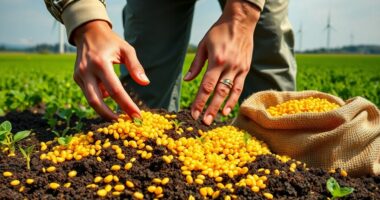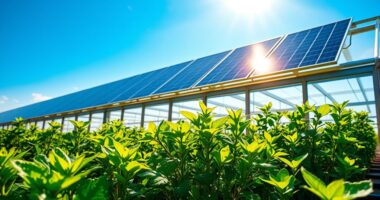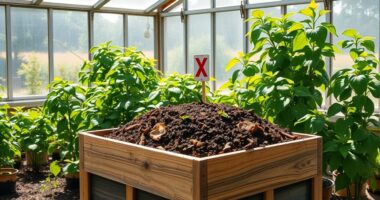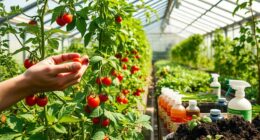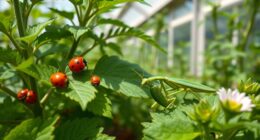To enhance nationwide winter oilseed supply chains for sustainable aviation fuel, focus on pennycress, camelina, and carinata. By building strong partnerships between farmers, researchers, and industry leaders, you can create a robust infrastructure for successful production. This collaboration helps address cultivation challenges and maximizes the environmental benefits of these crops, like reducing GHG emissions and improving soil health. If you're curious about the specifics of how this can be achieved, there's much more to explore.
Key Takeaways
- Building partnerships among farmers, researchers, and industry leaders is crucial for developing robust supply chains for winter oilseeds.
- Investment in infrastructure is necessary to facilitate the efficient cultivation and processing of pennycress, camelina, and carinata.
- Government support, such as tax incentives from the Inflation Reduction Act, can alleviate financial barriers for farmers growing winter oilseeds.
- Strategic planning and collaboration can optimize the integration of winter oilseeds into sustainable aviation fuel production.
- Enhancing supply chains will significantly contribute to the supply of sustainable aviation fuel and reduce greenhouse gas emissions.
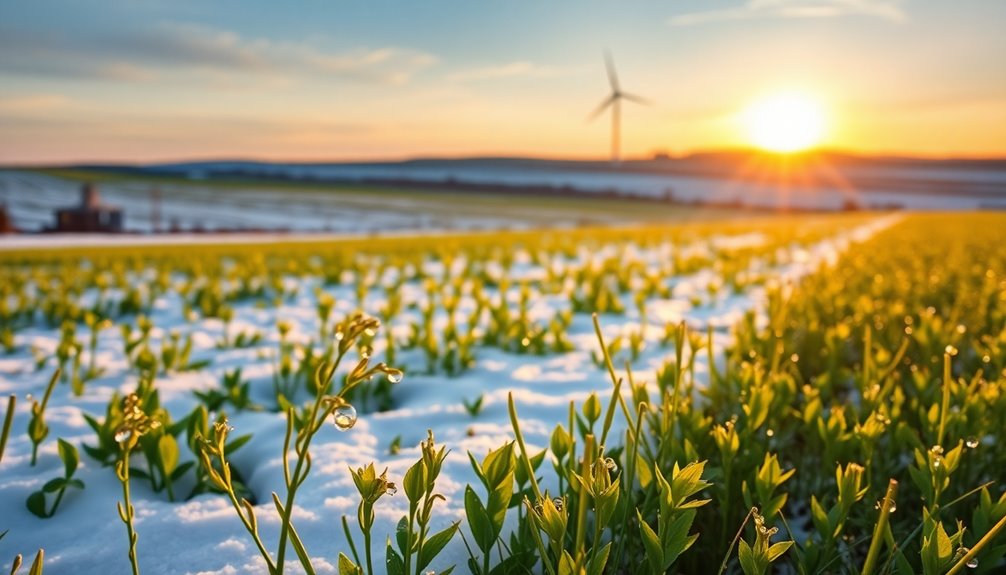
As the demand for sustainable aviation fuel (SAF) grows, winter oilseeds like camelina, pennycress, and carinata are stepping into the spotlight. These crops not only provide an exciting new revenue stream for farmers, but they also enhance soil health and reduce erosion, making them a win-win for both agriculture and the environment.
Winter oilseeds like camelina and pennycress offer farmers new revenue while boosting soil health and protecting the environment.
You'll find these oilseeds primarily thriving in the Upper Midwest, where they can be integrated into existing crop rotations with minimal disruption.
When you consider the life cycle analysis (LCA) of these crops, the benefits become even clearer. Camelina, pennycress, and carinata-based fuels can reduce greenhouse gas (GHG) emissions by impressive margins—50.4%, 65.2%, and 65.7%, respectively—compared to conventional jet fuel. This means that by adopting these oilseed crops for SAF production, you could contribute to millions of tons of emissions savings annually. Additionally, the estimated annual production potential of hydroprocessed renewable jet (HRJ) from these crops is 2.5 billion gallons, contributing significantly to the SAF supply.
Furthermore, their cultivation helps sequester carbon, reducing the need for additional cropland and mitigating indirect land-use changes.
Now, let's talk about the economic incentives. The Inflation Reduction Act offers tax benefits for low-carbon fuels, making it more appealing for farmers to grow these oilseeds. However, financial barriers still exist. You'll need to navigate the costs associated with planting and managing these crops to make the most of your investment.
That's where government support comes in; policy backing is essential to encourage large-scale adoption.
In addition to their economic and environmental benefits, these oilseeds play a vital role in water quality and biodiversity. They prevent nitrogen leaching into waterways and provide habitats for wildlife.
As you explore the potential of winter oilseeds, remember that partnerships between farmers, researchers, and industry leaders will be crucial for developing robust supply chains. With the right investments and infrastructure, the future of sustainable aviation fuel from winter oilseeds can be bright, benefiting both the planet and your bottom line.
Frequently Asked Questions
What Environmental Benefits Do Winter Oilseeds Offer for Aviation Fuel Production?
Winter oilseeds offer significant environmental benefits for aviation fuel production.
They reduce greenhouse gas emissions by up to 65.7% compared to petroleum fuels, helping you combat climate change.
These crops also prevent soil erosion, protect water quality, and enhance biodiversity by providing wildlife habitats.
Plus, they sequester more soil organic carbon, contributing to overall carbon storage.
How Do Pennycress, Camelina, and Carinata Compare in Yield and Oil Content?
Isn't it amusing how the humble pennycress and its friends stack up?
Carinata boasts the highest yield at 2,800 kg/ha, while pennycress and camelina lag behind at 2,036 kg/ha and 1,178 kg/ha, respectively.
When it comes to oil content, carinata again shines with 45%, while camelina and pennycress offer 37% and 32%.
What Are the Economic Impacts of Winter Oilseed Cultivation on Local Farmers?
Cultivating winter oilseeds can significantly boost your local farm's economy.
You'll find that crops like pennycress and camelina offer diverse revenue streams, from oil production to meal credits, which can cut costs by up to 70%. This not only enhances profitability but also supports sustainable practices.
Moreover, increased agricultural activity creates jobs in your community, stimulating local economies and fostering a healthier environment through improved soil health and carbon capture.
How Does Climate Affect the Growth of These Winter Oilseeds?
Climate significantly affects the growth of winter oilseeds like pennycress, camelina, and carinata.
You'll find that these plants thrive in temperatures between 59°F and 95°F, needing moist soil for germination.
They're cold-tolerant but can't handle shade well.
If you're cultivating these crops, remember that their yield varies with seasonal conditions and nutrient availability, so managing moisture and applying fertilizers can enhance growth and overall production.
What Technologies Are Emerging for Processing Winter Oilseeds Into Sustainable Aviation Fuel?
Like alchemists turning lead into gold, emerging technologies for processing winter oilseeds into sustainable aviation fuel are transforming agricultural waste into valuable energy.
You'll find advancements in mechanical pressing and solvent extraction that maximize oil yield. Additionally, mixed integer linear programming optimizes supply chains, while regenerative agriculture enhances soil health.
These innovations not only promise cost-effective solutions but also contribute to reducing greenhouse gas emissions, paving the way for a greener future in aviation.
Conclusion
In the quest for sustainable aviation fuel, think of winter oilseeds like a well-tuned orchestra, with pennycress, camelina, and carinata as its instruments. Each plays a vital role in creating a harmonious supply chain that can power our planes while protecting the planet. As we fine-tune this symphony, the potential for a greener future takes flight. Embracing these crops isn't just smart; it's a crucial step toward a sustainable tomorrow in aviation.


